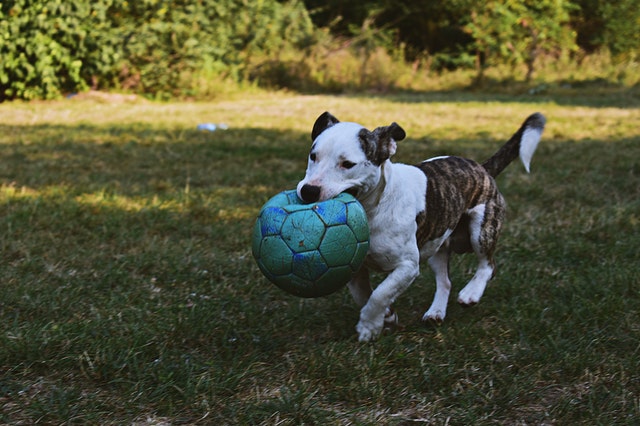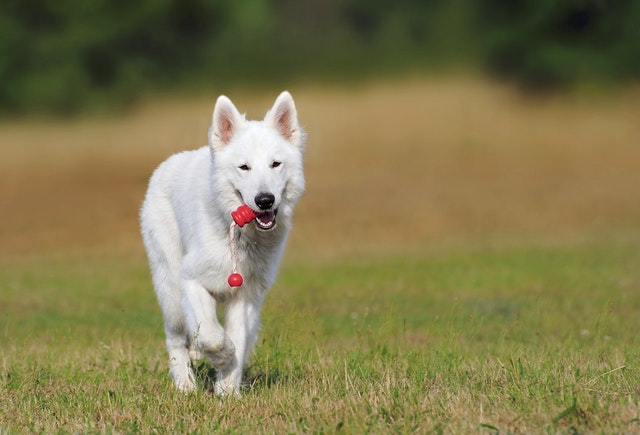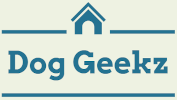Dogs live in a world that is much more complex and precise than humans. Helping your dog to use his flair is a great way to give him mental enrichment. Stimulating your dog mentally is as important as stimulating him physically, if not more. Indeed, this mental stimulation is very important if you want your dog to be calm and happy. Moreover, even the newborn puppy relies on this sense to decipher the world around it. And he will continue to do so throughout his life.
You could even say that the dog’s nose rules his brain. In fact, the part of the dog’s brain devoted to examining odors is 40 times larger than that of humans. The sense of smell is therefore the most developed sense in dogs, it would be around 35 times more than in humans. A dog’s olfactory membrane (also known as Jacobson’s organ) measures 130 cm 2 (compared to 3 cm 2 in humans) and dogs have 200 million olfactory cells compared to 5 million in humans.
Note, however, that all dogs are not equal in the development of this sense. In fact, dogs with a crushed muzzle, such as the French Bulldog or the Boxer, would have a less developed sense of smell than certain breeds such as hunting dogs, for example the Saint Hubert.

Dogs can smell a trail lasting several days, and this skill is used extensively in disciplines such as tracking, searching for people, drugs, and explosives. Some dogs are even trained to identify certain cancers.
You can combine this extremely powerful sense of smell and the dog’s natural desire to seek out many games. You can have fun together, train your dog’s brain, and spend some of that accumulated energy at the same time. Being a social animal, playing is very important in developing relationships and bonding.
10 flair game ideas for your dog
This article is not intended to bring a dog to competition, but to allow the dog to have fun. The goal is to start simple so that your dog is successful from the start. The goal is for the handler duo to have fun. Do not try to move too quickly, otherwise your dog may become frustrated. If you have more than one dog, it is best to play with only one dog at a time.
Game 1: What hand
To begin with, a very simple game is to place a treat in a hand with a closed fist. Your dog should not be able to see the treat. But he must choose which hand the treat is in. If he picks the wrong hand, show him the treat, but don’t give it.
If he is successful, mark his correct answer with a “yes” and give him the treat. You can repeat this exercise several times, changing hands, so as not to get used to always searching on the same hand.
For a more advanced version of this exercise, knock over three cups or containers. Hide a treat under one of the cups and ask your dog to find the treat.
Game 2: The cardboard game
Take your dog’s favorite toy and 3 boxes. Place the boxes next to each other and leave them open. Put your dog in another room. Hide the ball in the first box. Have your dog search for his ball. Do this exercise several times, always putting the ball in the same box at the beginning.
Then change the box. Your dog should be surprised the first time he can’t find his toy. So he will look for it with his nose. The moment he finds it, mark with a “yes” and play with him.
Game 3: Exploration games
You can also train your dog’s nose by spreading out his kibble ration in the garden or on a digging mat in the house. While you’re out for a walk, take a treat from your pocket and show it to your dog. Put this treat in some weed and ask him to find it. It’s good to bring some variety to these meals, but also to your walks. It is a game accessible to everyone.
You can vary this game. Place treats around the house in accessible places. Try to place them at different levels, so that your dog uses both his nose on the ground and his nose high. Let your dog have fun finding their treats.
Game 4: Hide and seek
Put your dog in a waiting position, such as sitting or having someone hold him while you hide. Then let your dog find you. Stay very calm and quiet so as not to reveal your hiding place and allow him to discover it for himself. Initially, hide so that he can find you easily. But, as soon as your dog gets more skillful in this hide and seek game, get into more difficult places. For example, you can hide under a blanket, behind a curtain or outside in a thicket. Most importantly, give your dog lots of praise when he is successful.
Please note that this game is not recommended for dogs with separation anxiety. This game will stress them out and teach them to seek their master even more when he does not see him.
Game 5: Sniff a track
While your dog is away, set up a series of small treats with a bigger extra reward at the end. Show your dog where the trail begins. Start by creating small trails until your dog gets a feel for the game. As he becomes more proficient, increase the length of the trail or leave a larger gap between the treats. You can then hide the last treat of greater value. Another variation is to draw a trail using beef or chicken broth and observe their reaction.
Game 6: 3-2-1 Find the toy
While holding your dog by the collar (for this game it is essential to make the collar positive), start playing with his favorite toy to interest him. Throw the toy in the grass or on a blanket on the ground. Count 3-2-1 and release your dog, telling him to find his toy. Once he understands the game, you can increase the difficulty by holding them for longer. But, you can also play in the dark or throw the toy into tall grass. He will then have to use exclusively his nose to find his toy. Once he finds it, don’t forget to praise it.

Game 7: Get your toy
Go to the area where you want to play with your dog. Put several items there that don’t belong to the dog at the start. Then go get your dog and start playing with his favorite toy to interest him. This allows more scent, including your own, to be put on that particular object at the time. Holding your dog by the collar, throw the toy in the area where the other objects are and encourage him to find his toy.
If they bring the wrong item, don’t say anything (not even a no!)! Take the object and encourage it to search again. When he succeeds, reward him with praise, a treat, or a game with the toy. Thus, he will understand that taking the wrong object brings him nothing, while the good one does.

Game 8: Giant Puzzle
Take several occupation toys. The toys chosen must not be dangerous for the dog. Hide them around the house or in your home, before you go to work. The first time you play this game, let your dog see you hiding the puzzle toys, so they know a new game is brewing. It will keep your dog busy in your absence. He will find all the toys and look after himself. This game should not be an excuse not to take care of your dog when you return.
Game 9: Where’s dinner?
Instead of feeding your dog in one place every day, put his bowl somewhere else and say “where’s dinner?” “. Encourage him to hunt for his meal. Be careful, some sensitive dogs could be too stressed with this exercise. It is therefore important to know your dog well, so as not to place him in a state of unnecessary stress during his meal. On the other hand, if your dog is a glutton or if he eats too quickly, it will allow him to take more time while having fun.
Game 10: Follow a person
This game is ideal for teaching ground research as opposed to air research. Lay a trail in the grass, where the scent will be easiest to find. Rub your feet on the ground at the start to create a fragrant trail. Walk 20 meters in a straight line, rubbing your feet along the path. As you walk, drop a treat every meter.
You can use cones or something to mark where the treats are so you know where you have walked. At the end of the trail, place an object with your scent on it, such as a sock with treats inside. If you walk your dog on a leash, tell him to “search”. Do not guide him or correct him if he is wrong. Do not pass your dog to prevent him from following you rather than smelling. If your dog deviates from the trail a bit, this is probably normal. Indeed, the tracks can move with the wind or even the humidity. As your dog becomes more proficient at this game, you can make it more difficult by tracing the trail in different directions.
This is what to occupy your dog intelligently! Allowing your dog to use his natural abilities is essential for his balance.
